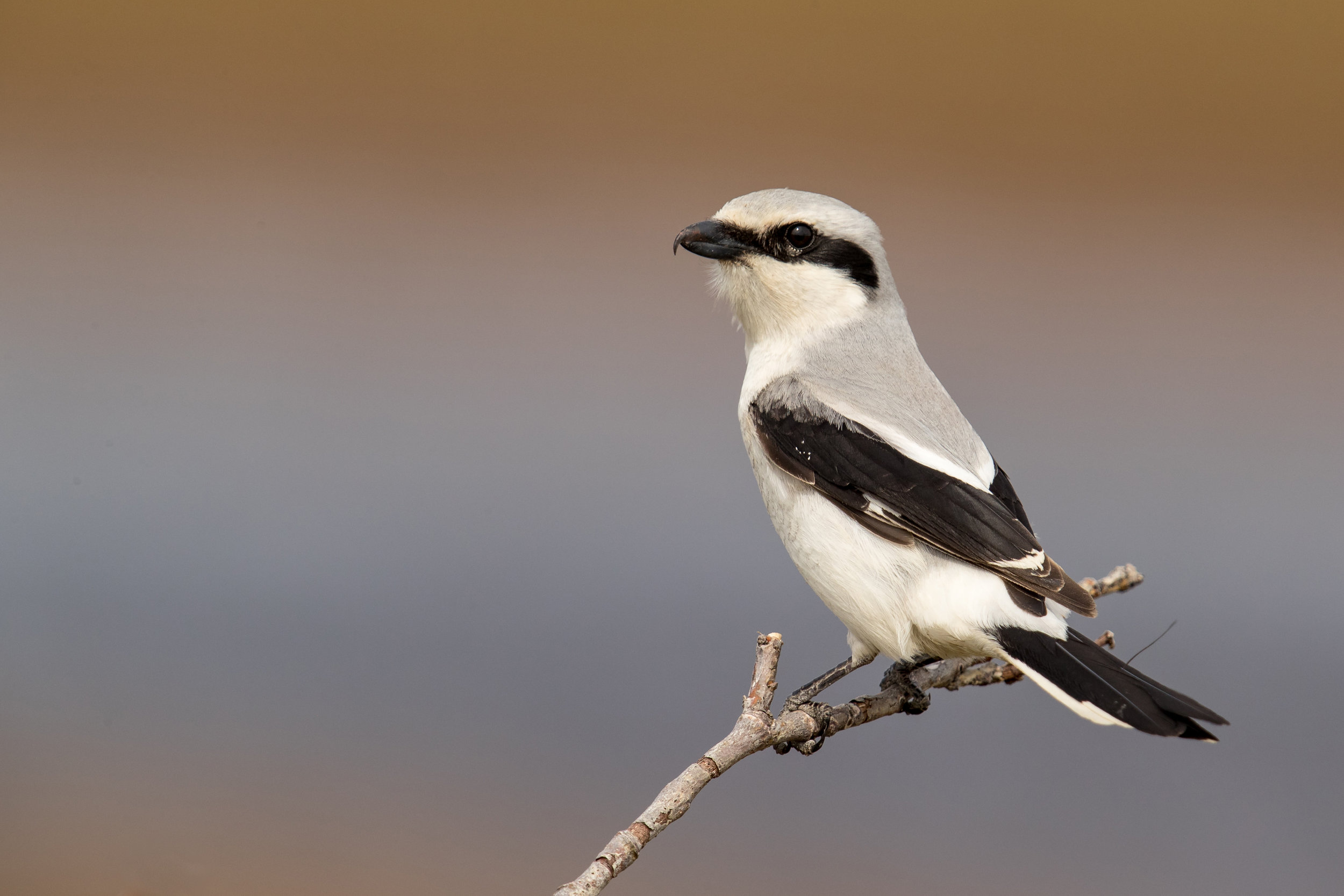Northern shrike photo by Mick Thompson
Though slightly smaller than a robin, this bird may indeed size up a robin and decide it fit for dinner. Perhaps, since robins can fly and evade most birds of prey, the predator will lure in the robin with a trick. Producing low, liquid whistles, the predator (a Northern Shrike) draws the American robin close to its perch on a hawthorn bush proudly extending itself on a savanna's edge. Sure enough, the robin takes the bait and the shrike strikes the bird with its hooked bill. Unfortunately, for the shrike, it is a Passerine and thus it lacks the lethal talons of an Accipiter. The shrike's initial grasp for the robin fails, and the robin flies away, indignant that such a small bird, a bird of its own order, would try to eat it.
This robin's story ended without malaise, but one in five songbirds will end up clutched in the beak of a Northern Shrike after a chase. If it were a vole the shrike had chased, three in five would end up in the bird's tight grasp; and if it were an insect, about nine in ten would end up on the wrong side of the shrike's hooked bill.
A northern shrike strikes again, leaving this treat for later. Photo by Drew Harry
Shrikes employ the interesting habit of caching prey. Finding a sharp point of black locust, hawthorn, plum, or barbed wire, the shrike will “cache” its prey, which means it saves the prey for later. Northern shrikes have been known to cache as many as nine prey items, and will return to these food banks when times are tough.
Sometimes, a Northern Shrike's eyes get too big for its bill, or perhaps the bird tires of chasing skittish songbirds. Nevertheless, there have been reports of shrikes attacking spruce and sharp-tailed grouse. These were unsurprisingly unsuccessful attacks.
A group of shrikes is called a watch, and the Latin name is a fierce one: Lanius excubitor, meaning butcher watchman. The group name for shrikes seems hardly relevant, as these birds often overwinter on a solitary range encompassing about 1,100 acres, which is about the total area that Faville Grove Sanctuary helps manage. We documented one Northern Shrike during our Christmas Bird Count this past weekend, and it's likely that bird is the solitary “watchman” in the area. With a name like butcher watchman, it's no wonder these birds are found alone. But, if you see this bird—gray on top and white on bottom with black wings and a black mask on the face—you're in for a real treat. It's the only Passerine in Wisconsin to regularly feed on vertebrates, its vocal range can be quite impressive, and its aerial pursuits can be simply breathtaking. You may even indirectly confirm a shrike in the area when you see a shrew or vole cached on a thorny bush. Do not be spooked, as of yet no shrike has tried to lure and attack a human.
Written by Drew Harry, Faville Grove Sanctuary land steward
Cover photo by Frank D. Lospalluto





